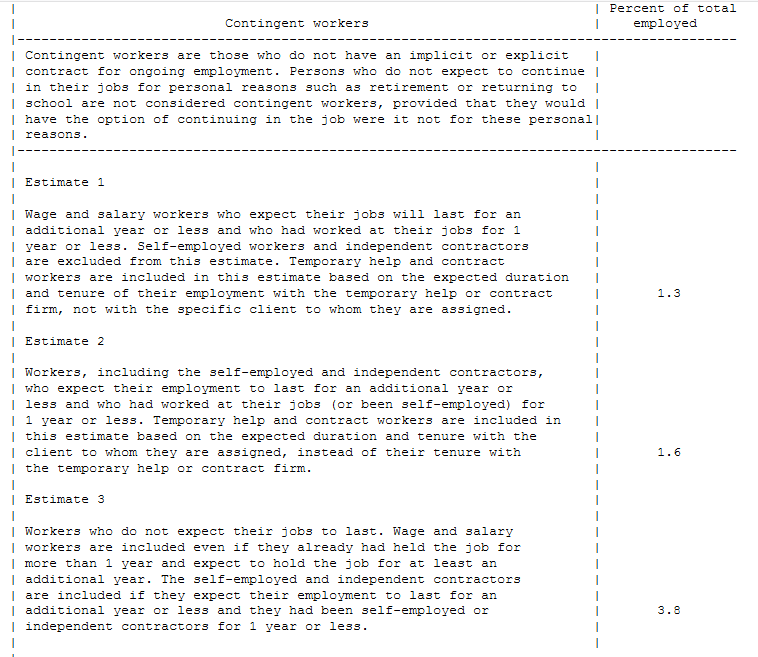Can You Gig It: Who’s Really A Part Of The Gig Economy?

Back in the day job seekers would fill out an application, attend an interview, and wait to receive an offer. Although the process is the same for some, today’s workforce has evolved, adding to the ways people can find employment. Today’s workforce is made up of traditional workers, contingent workers, and people with alternative forms of employment. Companies like Lyft, Uber, and Fiverr have brought more attention to what is currently known as the “Gig Economy.” According to Google’s dictionary, the Gig Economy is a “labor market characterized by the prevalence of short-term contracts or freelance work as opposed to permanent jobs.” After the Bureau of Labor Statistics (BLS) released their 2017 study on the Gig Economy this past June, economists and journalists have begun comparing the results of the original study from 2005. The results ultimately beg the question who qualifies as being a part of the Gig Economy, and do they know what protections they have?

Many experts have speculated about the decrease in the number of people who are a part of the Gig Economy. Creating a solid understanding to what’s going on in today’s Gig Economy is important in determining the needs of the employees. Market Watch recently reported that in comparison, the number of Gig Economy employees has decreased from 2005 to 2017. This suggests that workers still value the traditional means of employment. “Taken at face value, the results indicate that the role of non-traditional work arrangements in the U.S. economy has remained largely unchanged during the past 20 years,” Said Senior Economist for The Conference Board, Brian Schaitkin. “Even as excitement and media coverage of the growth of the ‘gig economy’ has increased.” Although numbers show a decrease in Gig Economy workers, it’s important to note that those who have found work through the internet or apps like Fiverr are not included.
There is still talk about the report excluding data collected from those seeking work through some mobile apps. HR Dive claims that many researchers of the Gig Economy are conflicted because results directly contradict data independent groups have gathered on employment rates. In addition to this, the results produced by the BLS also show inconsistency with the data produced by the American Staffing Association (ASA), showing the significant growth in flexible work arrangements. Another pressing factor is that the questionnaire was self-reported, possibly confusing survey recipients on their classification. The Guardian recently interviewed a survey participant who is currently employed through Uber. The Uber driver reported to The Guardian that based on the survey, he couldn’t determine whether he was a contingent worker or alternate arrangement worker.
The discrepancies in the results of these various studies show that there is still debate as to what the Gig Economy is and who classifies as a part of it. Issues can arise if an employee doesn’t understand what rights and protections they have as an employee of the Gig Economy. Because there is still data to be collected on those who have found employment through the internet or apps, there are differences in opinions as to whether the Gig Economy is growing or shrinking. It’s unclear what is next for the Gig Economy. There is still more data to be evaluated. The more data collected the better our understanding will be to make sure Gig Economy workers resources are readily available as traditional employees.


